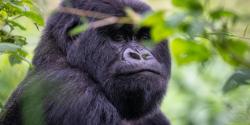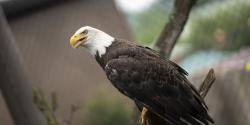As the largest species of stork in Africa, the saddle-billed stork's long legs and neck help it hunt for fish and other aquatic animals as it moves slowly through shallow water.
Their long, colorful bill is sharp, allowing the stork to stab and catch its prey quickly. The top of its bill has a yellow, saddle-shaped patch of soft skin, which is how the species gets its name.
Scientific Name: Ephippiorhynchus senegalensis
Conservation Status: Least Concern
Size: Close to 5 ft. tall, with a wingspan of 7 to 8 ft.
Weight: Adults range from 11 to 15 lbs., with males generally being larger
Median Life Expectancy: 13.1 years











